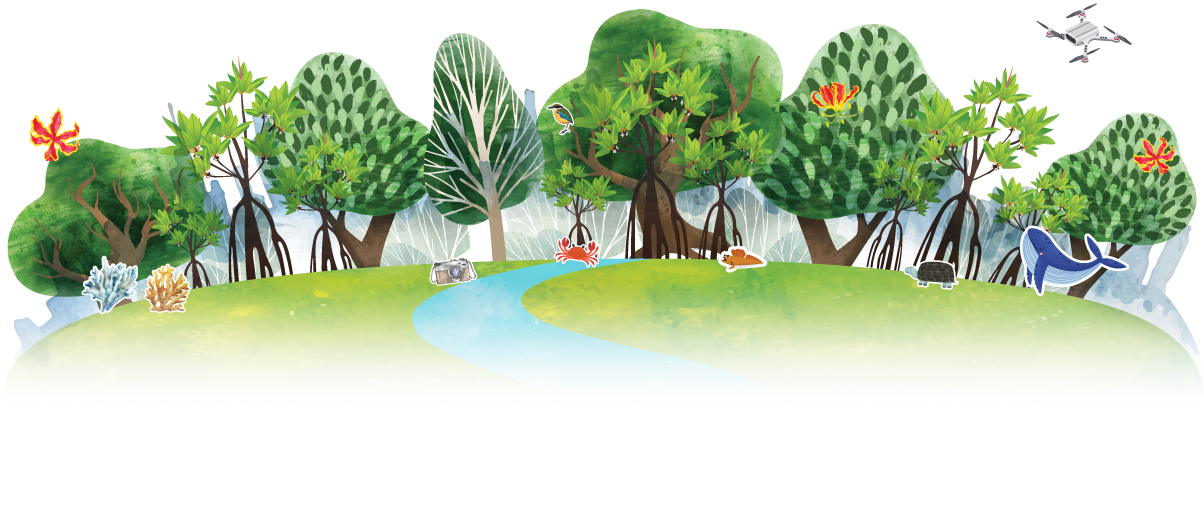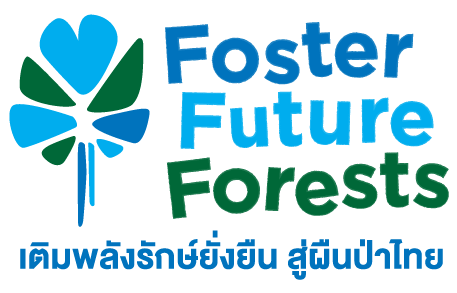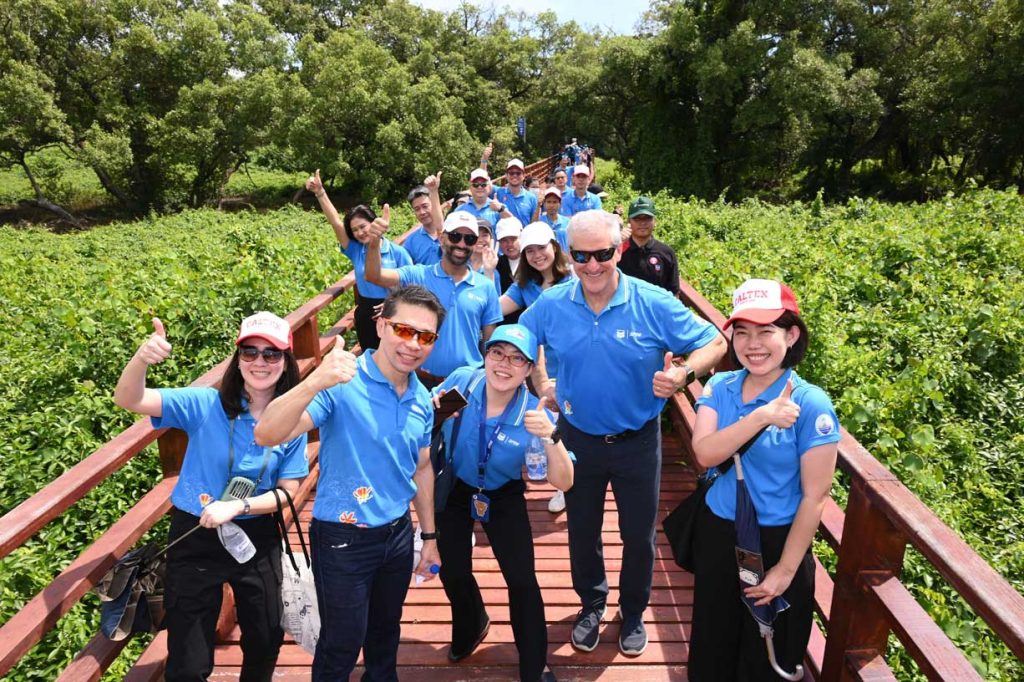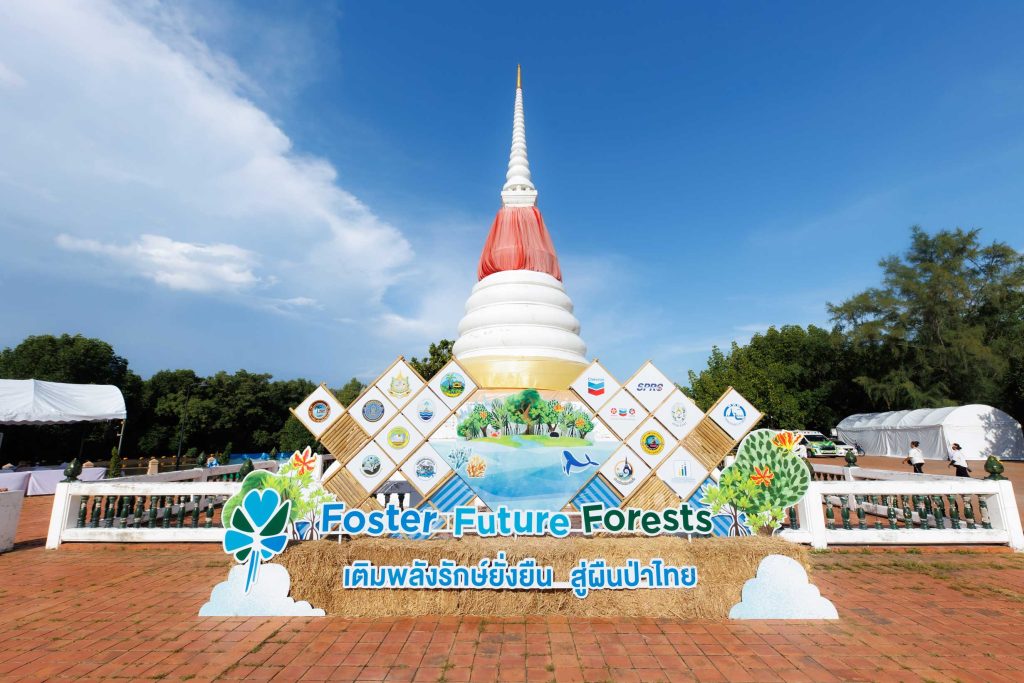


About the Project
The ‘Foster Future Forests’ Project is a joint initiative of CTEP, SPRC, and CTL aiming for ecological restoration in under-developed land within ‘Phra Chedi Klang Nam’ mangrove forests located in Pak Nam subdistrict, Mueang district, Rayong. Throughout its course, the project aims to increase green space for carbon sequestration, promote community-based conservation, pave the way for environmental and economic sustainability in local communities, and expand to more areas in the future. These are testimonies to our mission to reduce carbon emissions from our business activities, i.e. our environmental footprint. In addition to achieving environmental benefits, the local communities will experience an improvement on their quality of life.


Project Overview
‘Foster Future Forests’ is a long-term project that began in October 2023 as a collaboration between three groups of parties: (1) CTEP, SPRC, and CTL; (2) Department of Marine and Coastal Resources and Rayong Provincial Government; and (3) Provincial Office of Natural Resources and Environment, Rayong; Marine Office, Rayong Branch; Rayong Provincial Administrative Organization; Rayong Provincial Fisheries Office; Public Relations Office, Rayong; Tourism Authority of Thailand, Rayong Office; Rayong Municipality; Noen Phra Municipality; Noen Phra Community; ‘Kao Yot’ Artisanal Fishing Community Enterprise; Tourism Enterprise of Pak Nam Subdistrict; and Rayong River and Mangrove Forest Restoration Conservation Group. The project’s scientific consultant is the International Association for the Future STEM Workforce (IAFSW), for the project’s execution on an under-developed area of 100 rai in ‘Phra Chedi Klang Nam’ mangrove forests located in Pak Nam subdistrict, Mueang district, Rayong. The project highlights the group of companies’ “One Team” corporate culture, which is integral to the group’s emphasis on fostering cooperation among all parties within the business group. The project’s objectives align with our mission to reduce carbon emissions and contribute to the economic and environmental sustainability of local communities, as detailed below.
To advance scientific research through nature-based learning, academic institutions are involved in evaluating ecological and environmental outcomes, planning project operations, and organizing events. They conduct research
assessments, establish success metrics and monitor the progress of the project using verifiable and reliable data, with the assistance of innovative technologies, such as drones. As a result, these outcomes will serve as a foundation for developing models that future projects can emulate. The project also intends to collaborate with a multidisciplinary team of experts include:
- Faculty of Forestry, Kasetsart University: The institution’s expertise in forestry and ecology will contribute to urban project planning, enhance biodiversity, and assess trees for reforestation, so that the outcomes are effective and measurable.
- Faculty of Environment and Resource Studies, Mahidol University: The agency’s expertise in environmental science and hydrology assists with project planning concerning irrigation for water management in arid areas and sustainability practices for urban forests.
- Thailand Greenhouse Gas Management Organization: This agency operates under the purview of the Minister of Natural Resources and Environment. It provides services and standards related to measurement, reporting, and traceability, as well as certifying reported figures of greenhouse gas emissions, reduction, and offsets. For the project, the agency is involved in all measurement processes. As a result, the project’s trajectory towards reduced carbon emissions is efficient and supported by quantifiable evidence.
